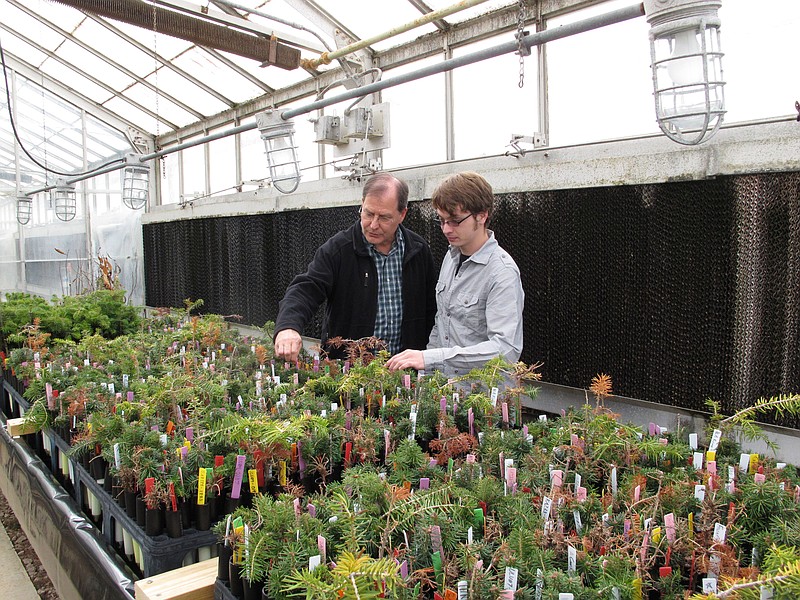BAKERSVILLE, N.C. (AP) - Jeff Pollard trudged up the steep slope and stopped at a desiccated, rust-brown tree. Two months earlier, workers had tagged this Fraser fir as ready for market.
It was going to be someone's Christmas tree. And now it was dead.
"Never get paid back for this tree," he said with a shrug. "Eleven years of work - gone."
The culprit: Phytophthora root rot, a water mold that, once in the soil, makes it unfit for production.
Pollard has been growing Fraser fir in these western North Carolina mountains for nearly 40 years. To him, it's "the ultimate tree."
But this persistent problem has him looking to a species from the birthplace of old Saint Nicholas himself for a possible alternative. And he's not alone.
Growers in Oregon, the nation's No. 1 Christmas tree producer, have been experimenting with the Turkish fir for more than 30 years. That species and the Nordmann fir, also native to Eurasia, have shown promising resistance to root rot.
"Phytophthora is a problem in most areas where true firs ... are grown," said Gary A. Chastagner, a plant pathologist and extension specialist at Washington State University. "It's a national problem."
Oregon leads the nation in Christmas tree production, with nearly 7 million harvested in 2007, the latest figures available from the National Christmas Tree Association. North Carolina was a distant second, with around 3.1 million trees cut.
One study estimated the potential losses to Oregon's nursery and Christmas tree industries of up to $304 million a year if Phytophthora is not properly contained. Douglas and Noble fir are the dominant holiday tree species in the Pacific Northwest.
In North Carolina, the No. 2 producer, it costs farmers up to $6 million a year, said John Frampton, a Christmas tree geneticist at North Carolina State University in Raleigh.
To date, no fungicide has proven effective to control Phytophthora on Christmas tree plantations. So once it's in the soil, that's it.
Pollard, who grows about 130,000 trees on several western North Carolina farms, said Phytophthora set in after Hurricane Fran in 1996 and got worse following 2004's Hurricane Ivan. He's lost about a quarter of his trees over the past six seasons, and the state rated the mortality on some of his stands at up to 80 percent.
"They'll be good for growing grass," he said as he stood overlooking several barren hilltop fields recently.
Researchers at Washington State and several other universities are hoping to unlock the secrets to some species' rot resistance.
In a greenhouse on the campus of NC State, master's student Will Kohlway looked over rows of fir seedlings that had been inoculated with Phytophthora. He's looking for genes related to disease resistance in Turkish fir.
"And if we can identify the gene, maybe we can go out and ... possibly we can speed up the hybridization and get something to the growers faster," he said.
But what works in North Carolina might not necessarily help in the Northwest, where other species of Phytophthora are more common, said Chastagner.
Katie McKeever, a Ph.D. candidate in Chastagner's lab, is working under a U.S. Department of Agriculture grant to create a nationwide collection of Phytophthoras from Christmas trees to understand regional variation in pathogen populations. The goal is to challenge various firs with different Phytophthoras to determine mechanisms of resistance and ultimately develop genetic markers that can be used to identify trees that are resistant to the disease, Chastagner said.
But until native trees can be modified to have greater resistance, Pollard and others are looking toward these other species.

